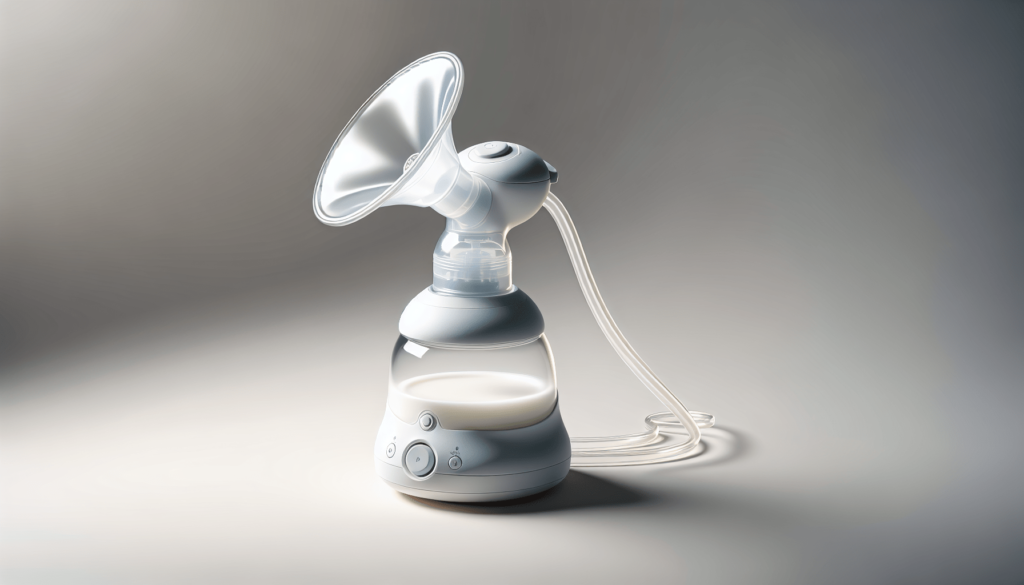Have you ever wondered about the ideal amount of time to spend on a pumping session? It's a question that many new parents, especially mothers, ponder as they navigate the early months of parenthood. Pumping breast milk is not just about providing nourishment when you're away from your baby; it’s also a crucial part of ensuring an abundant milk supply. However, understanding the correct duration of each session can feel like deciphering a complex code.
Understanding the Importance of Pumping
Pumping is a remarkable tool, whether you're returning to work, want to share feeding duties, or are looking to increase your milk supply. It's not just about extracting milk; it's about maintaining your body's milk production on days when direct breastfeeding might not be possible. But how long should each session last to achieve these goals?
The Science Behind Milk Production
Your body works on a simple principle: supply and demand. The more you breastfeed or pump, the more signals your body receives to produce milk. Essentially, frequent and effective removal of milk from your breasts is key to boosting or maintaining milk supply. If you're trying to balance this with the chaos of new parenthood, you might be curious about the optimal time spent on each pumping session.
The Golden Rule of Demand and Supply
The mantra is simple: the more milk removed from your breasts, the more milk your body will produce. Therefore, the duration of your pumping session can impact your overall supply. Some might think they should pump until their breasts are completely empty, but it's crucial to recognize that your breasts never really empty; they are continuously producing milk.
What Factors Influence Pumping Duration?
It’s easy to assume a one-size-fits-all approach when it comes to pumping duration, but in reality, several factors can influence how long you should pump. Let's break down these factors to help you understand their impacts.
Individual Milk Production
Every individual's body is unique, and so is your milk production. Some people have a faster letdown reflex, which means milk starts flowing more quickly and might fill up storage bottles sooner. Others might have a slower or delayed letdown, requiring longer sessions for the same amount of milk. Understanding your body’s rhythm can significantly affect how long you should pump.
Type of Breast Pump
The technology at your disposal matters, too. High-quality electric pumps can express milk more efficiently compared to manual pumps. While a hospital-grade pump might help achieve milk expression within 10 to 15 minutes per session, a manual or lower-grade pump might require more time. So, when thinking about the duration, the type of pump you are using plays a vital role.
Your Schedule and Lifestyle
How often you need to pump is also dictated by your day-to-day life. A stay-at-home parent might have more flexibility with pumping length, in contrast to a full-time working parent squeezing sessions into breaks. Your routine, commitments, and personal comfort all influence the ideal session length.

The Recommended Duration of Each Pumping Session
Many experts suggest that a general pumping session should last between 15 to 30 minutes. However, that's just a general guideline and understanding your individual needs can fine-tune this timing.
The 15-20 Minute Rule
If you’re new to pumping, starting with a 15 to 20-minute session might suffice. This timeframe typically allows you to fully drain breasts and trigger milk production adequately. During each session, you should be switching between different settings on your pump to mimic your baby's nursing pattern—starting with a faster suction to stimulate letdown and then switching to a slower, deeper rhythm.
Longer Sessions for Fullness
If you’re feeling particularly full and struggle to relieve engorgement, extending your sessions to around 25 to 30 minutes could be beneficial. It's important to consider, however, that excessively long sessions can lead to discomfort or reduce the skin integrity around your nipples. The key is comfort balanced with effectiveness.
Short Sessions for Frequent Pumping
Conversely, shorter sessions of approximately 10 minutes could be integrated more frequently throughout the day. This could be useful if you find it challenging to carve out a longer, uninterrupted stretch of time. Some may find frequent, shorter sessions fit their lifestyle better and can sometimes lead to an effective increase in milk supply due to high frequency.
Tailoring Pumping to Your Schedule
Everyone’s needs and schedules are unique, which means finding a pumping routine that fits seamlessly into your life is paramount. How do you tailor your schedule without compromising on milk production?
Creating a Pumping Routine
Having a routine can provide consistency that your body needs. Align your pumping sessions with your baby's feeding schedule when possible or in intervals equivalent to when your baby generally nurses. This helps signal to your body that it needs to maintain or increase milk production, nurtured by the rhythm of regular feeding.
Considering Night Pumps
Nighttime can often be a peaceful moment to fit in a pumping session. Prolactin levels, the hormone responsible for milk production, are higher at night. If your baby is sleeping through the night or for long stretches, sneaking in a quick session might place you ahead on milk storage.

Listening to Your Body
Your body gives signals. Engorgement, tenderness, and an overflowing feeling indicate you may need to pump. Equally, strands of discomfort or fatigue signal that it might be time to stop. Learning this balance is a journey of trial and error, intrinsic to understanding the right pumping duration for you.
Recognizing the Signs of Enough
Milk flow might start strong and then taper down, running almost dry towards the end. This natural waning is a signal that your session might be near completion. However, once the flow decreases, staying on the pump for a few more minutes mimics cluster feeding—a technique that can help boost supply.
Avoiding Over-Pumping
Yes, over-pumping is a real thing! More is not always better, and over-pumping can lead to discomfort, soreness, and even reduced supply over time. If you're pumping primarily to relieve engorgement and not necessarily to increase your stored supply, take care not to pump for excessive periods.
Practical Tips for Effective Pumping Sessions
To make pumping effective and less of a chore, here are some handy tips and tricks you can incorporate into your routine:
Finding Your Pumping Sanctuary
A calm, quiet environment can significantly improve milk flow. Try creating a small sanctuary in your home—a quiet corner where you can relax and bring focus to the task at hand. Some find that having a photograph or clothing of their baby helps stimulate letdown.
Massaging Your Breasts
Gentle massages before and during your session can help improve milk flow, loosening any blockages and promoting a more effective letdown. Massaging in a circular motion towards the direction of the nipple can be incredibly beneficial.
Checking Equipment Fit
When it comes to breast shields and pump parts, size matters. Ill-fitting parts can lead to discomfort and inefficiency. Regular cleaning and maintenance are essential to ensure optimal performance and hygiene for each pumping session.

Incorporating Breaks and Self-Care
We often hear this advice: take care of yourself to take care of your baby. However, it’s worth hearing again and internalizing.
Scheduled Breaks
Taking scheduled breaks between feeding and pumping sessions is important. It provides you with rest and helps maintain a balanced routine. It's okay to take a break, even if that means stepping back to reflect, breathe, or indulge in a small comforting activity.
Remembering Hydration and Nutrition
Milk production can take a lot out of you, both literally and metaphorically! Ensuring you're well-hydrated and maintaining a nutritious diet is key. Bountiful milk supply and personal health benefit from good hydration and nutritious meals.
Monitoring Your Progress and Needs
Lastly, monitoring your milk supply and personal comfort can be immensely helpful. Regularly examine how your supply aligns with your goals and needs. Contact a lactation consultant if any concerns or supply issues arise.

Understanding Personal Comfort
Always remember, comfort is the cornerstone to efficiency. If a duration feels too lengthy or uncomfortable, adjust! The same session duration might not suit everyone, and personal comfort leads to better efficiency and satisfaction from the pumping process. Consult healthcare professionals as needed to ensure your routine matches your unique health profile and lactation needs.
Reflecting on Your Journey
Every small challenge faced with grace, including mastering the ideal pumping session length, is a triumph in its own right. Celebrate each milestone, big or small, remembering that an empowered, well-informed journey leads to the best outcomes for both you and your baby.
In essence, the recommended duration of each pumping session doesn't have a strict universal number. It's a parameter that fluctuates based on personal rhythms, goals, and comfort. Equipped with these insights, step into your next pumping session feeling informed and empowered, allowing patience and understanding be your greatest allies.

